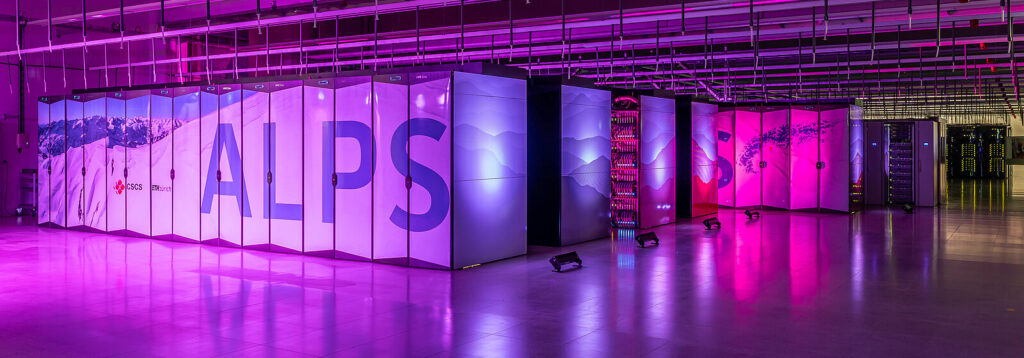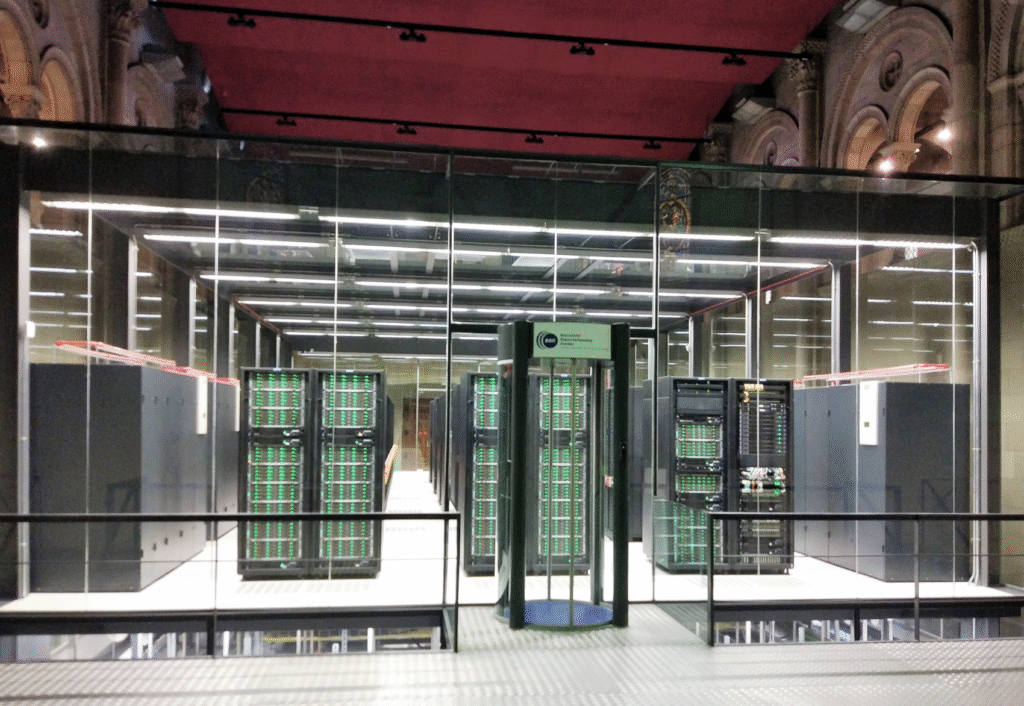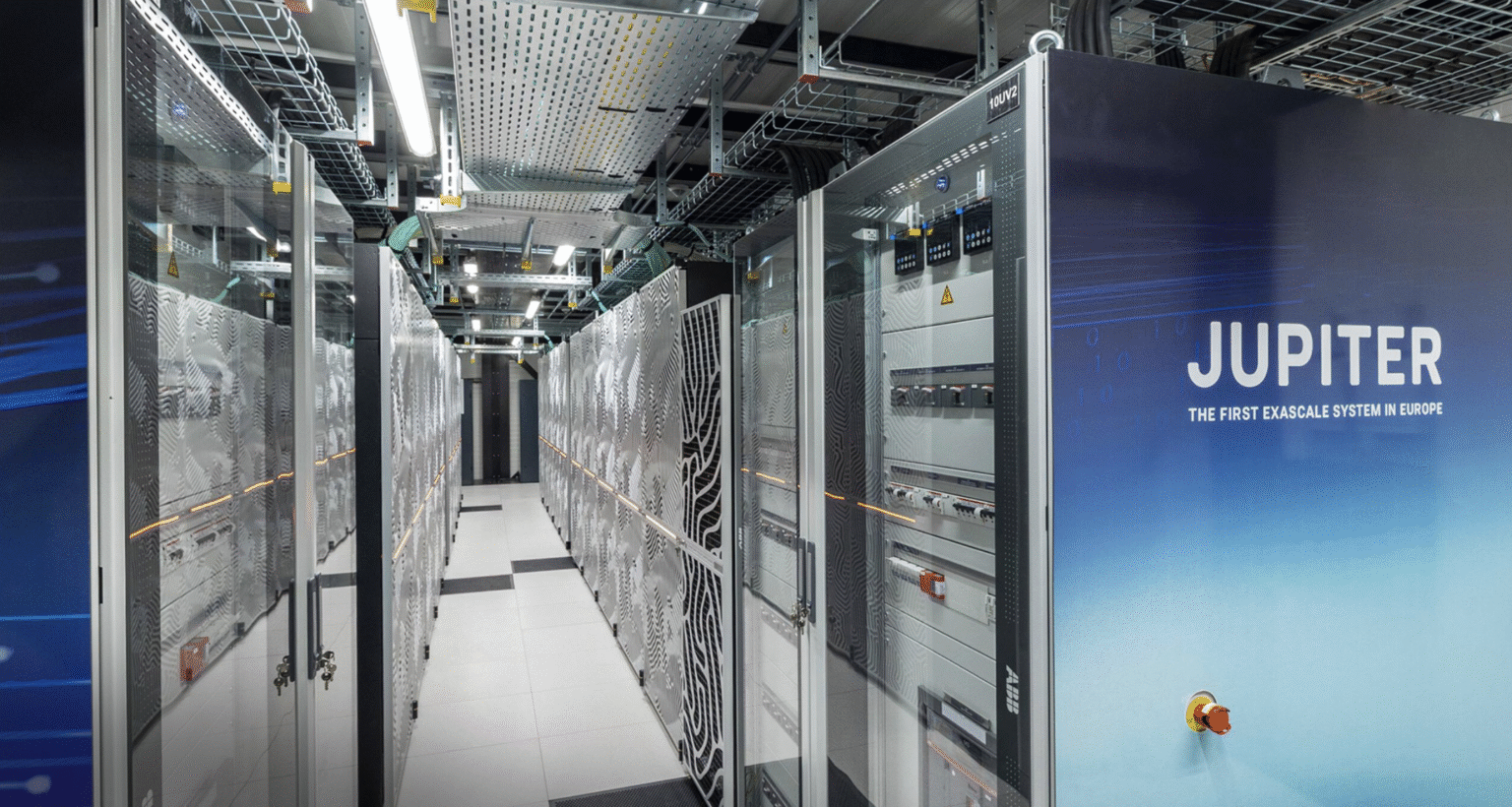Europe is home to some of the world’s most powerful supercomputers, driving breakthroughs in scientific research, industrial innovation, and artificial intelligence. European supercomputers are crucial for keeping the continent competitive in an era defined by data and artificial intelligence. Developing top-tier supercomputers and exascale supercomputers in Europe can help the region maintain technological sovereignty, and ensure that critical research and industrial applications can run on domestic infrastructure rather than relying on foreign systems.
While the EuroHPC Joint Undertaking (JU) is spearheading Europe’s exascale ambitions, pooling resources and co-funding systems like JUPITER, LUMI, and Leonardo, not all leading European supercomputers are part of this program. This article was based on the 65th edition of the TOP500 list that was published in June 2025 ranking all the world’s systems based on their performance and providing a benchmark for the global HPC market.
Europe is clearly accelerating in the HPC arena, with JUPITER’s exascale capabilities and a growing number of energy-efficient, AI-enabled systems anchoring its leadership. Let’s look at the leading European supercomputers, ranked by their computing performance.
1. JUPITER (Germany)
- Rank: #4 globally – Europe’s first exascale supercomputer
- Operated by the Jülich Supercomputing Centre.
- Sustained performance: Preliminary ~793 petaflops, expected to scale to over 1 exaflop
- Energy efficiency: Its JEDI module topped the Green500 list as the most efficient supercomputer (Booster module listed #21 globally)
- Highlights: The name JEDI, used for JUPITER’s first installed module, isn’t just a sci-fi nod – it’s an acronym: Jupiter Exascale Development Instrument
- More technical information: https://www.fz-juelich.de/en/ias/jsc/jupiter
JUPITER, ranked number four on the latest TOP500 list, is Europe’s fastest supercomputer. With an intermediate performance of nearly 800 petaflops, this EuroHPC supercomputer is on track to become the continent’s first exascale system, capable of surpassing one exaflop, or a quintillion operations per second. Its unprecedented power will accelerate scientific discovery and foundational research in fields such as climate modeling, energy systems, and biomedical innovation.
At the same time, JUPITER supercomputer is redefining sustainability in high-performance computing, with its first installed module, JEDI, leading the Green500 ranking of energy-efficient supercomputers since May 2024.
2. HPC6 (Italy – Eni)
- Rank: #6 globally
- Sustained performance: ~478 petaflops
- Operated by the Italian energy company Eni, mainly for seismic imaging, energy transition research, and industrial workloads
- Energy efficiency: #29 globally on Green500 list
- Highlights: Built with state-of-the-art energy efficiency standards and features an advanced liquid cooling system.
- More technical information: https://www.eni.com/en-IT/actions/energy-transition-technologies/supercomputing-artificial-intelligence/supercomputer.html
HPC6, launched by Eni in November 2024 at its Green Data Center in Ferrera Erbognone, Italy, is a private supercomputer – not part of EuroHPC supercomputers – but still one of Europe’s top high-performance computing resources. Ranked sixth overall on the TOP500 list, it is the world’s most powerful industrial supercomputer, with a peak performance of 606 petaflops.
Designed to drive innovation in energy technologies, this European supercomputer supports research in materials science, fluid dynamics, and climate modeling while reinforcing Eni’s independence from external cloud providers.
3. Alps (Switzerland)
- Rank: #8 globally
- Sustained performance: ~435 petaflops
- Operated by the Swiss National Supercomputing Centre (CSCS)
- Energy efficiency: #19 globally on Green500 list
- Highlights: The cooling water used by the system is repurposed to supply hot water to the city of Lugano.
- More technical information: https://www.cscs.ch/computers/alps
The Alps supercomputer is located in Lugano and funded by the Swiss Confederation through the ETH Domain (Eidgenössische Technische Hochschulen Bereich). Serving selected scientific users, it supports research ranging from Large Hadron Collider data analysis and SwissFEL X-ray laser storage to weather simulations for MeteoSwiss.
Powered entirely by hydropower, Alps consumes around seven megawatts of electricity – equivalent to 10,000 Swiss households – and repurposes its cooling water to supply hot water to the city, keeping direct CO₂ emissions minimal. While concerns remain about its broader environmental footprint, the supercomputer plays a crucial role in advancing climate, medical, and other scientific research.

4. LUMI (Finland)
- Rank: #9 globally
- Sustained performance: ~379 petaflops
- Operated by CSC – IT Center for Science in Kajaani, Finland.
- Energy efficiency: #36 globally on Green500 list
- Highlights: LUMI takes over 150m2 of space, which is about the size of a tennis court. The weight of the system is nearly 150 000 kilograms
- More technical information: https://www.lumi-supercomputer.eu/
LUMI, a pre-exascale EuroHPC supercomputer located in northern Finland, ranks among the world’s top 10 most powerful systems and continues to drive European research and innovation since May 2022. Built as a Cray EX system by Hewlett Packard Enterprise, it comprises 362,496 cores capable of executing over 379 petaflops, with a theoretical peak of more than 531 petaflops.
Designed with sustainability in mind, LUMI supercomputer is powered entirely by carbon-free hydroelectric energy, uses liquid cooling for its processors, and repurposes waste heat for local district heating, while its data center benefits from naturally cold Nordic temperatures. Hosted by the LUMI consortium, which includes 12 European countries, the supercomputer is one of the continent’s most prominent scientific instruments for the 2021–2027 research period.
5. Leonardo (Italy)
- Rank: #10 globally
- Sustained performance: ~241 petaflops
- Operated by CINECA in the Bologna Technopole, Italy
- Energy efficiency: #71 globally on Green500 list
- Highlights: When Leonardo officially debuted, it got into the TOP500 list at an astonishing 4th place worldwide
- More technical information: https://leonardo-supercomputer.cineca.eu/hpc-system/
Leonardo, a pre-exascale EuroHPC supercomputer ranks 10th globally with a performance of 241.2 petaflops. Built on BullSequana XH2000 technology supplied by ATOS/Eviden, Leonardo combines advanced HPC and AI components to tackle even the most complex computational workflows. The system is preparing for a major LISA upgrade, which will add an AI-optimized partition, boost operational performance, and provide new capabilities to meet evolving scientific and industrial research needs.
6. Isambard-AI Phase 2 (United Kingdom)
- Rank: #11 globally
- Sustained performance: ~216 petaflops
- Hosted at the University of Bristol’s National Composites Centre; part of the UK’s AI Research Resource (AIRR)
- Energy efficiency: #4 globally on Green500 list (for Isambard-AI’s Phase 1)
- Highlights: features advanced liquid cooling and repurposes waste heat for Bristol’s district heating
- More technical information: https://www.bristol.ac.uk/research/centres/bristol-supercomputing/articles/2025/lifting-the-lid-on-isambard-ai.html
Isambard-AI, the UK’s fastest AI supercomputer and one of Europe’s most advanced AI-focused systems, is newly launched by the Bristol Centre for Supercomputing at the University of Bristol. Designed as a national AI innovation hub, it supports academia, startups, and industry by providing scalable computational power for training large AI models and running complex scientific simulations. Powered by HPE Cray EX architecture and NVIDIA GH200 Grace Hopper Superchips, the system combines CPU and GPU integration for maximum performance.
7. ISEG2 (Netherlands/Iceland – Nebius)
- Rank: #13 globally
- Sustained performance: ~202 petaflops
- Built by Nebius AI, hosted in Iceland, officially credited to the Netherlands in rankings
- Energy efficiency: #67 globally on Green500 list
- Highlights: Uses Iceland’s renewable energy (geothermal & hydro) for sustainable operations
- More technical information here: https://top500.org/system/180234/
ISEG2, built by Nebius AI and located in Iceland (officially credited to the Netherlands in rankings), is Europe’s most powerful commercially available supercomputer. Debuting in June 2025 at #13 on the TOP500 list with a Linpack performance of 202.4 petaflops, it is designed for generative AI training and enterprise HPC workloads. The platform uses custom-tailored servers optimized for modern accelerated computing, including NVIDIA Hopper GPUs, and offers dedicated node solutions for both machine learning training and inference.
8. MareNostrum 5 (Spain)
- Rank: #14 globally in accelerated partition; #45 for general-purpose partition
- Sustained performance: 175 petaflops
- Hosted by Barcelona Supercomputing Center (BSC)
- Energy efficiency: #44 globally on Green500 list
- Highlights: MareNostrum 5 is housed in the Torre Girona Chapel in Barcelona, Spain – a decommissioned church that has been transformed into a state-of-the-art data center, earning the facility the nickname “the world’s most beautiful data center”
- More technical information: https://www.bsc.es/marenostrum/marenostrum-5
MareNostrum 5, a pre-exascale EuroHPC supercomputer located in Barcelona, Spain, is hosted at BSC-CNS and combines BullSequana XH3000 and Lenovo ThinkSystem architectures. With a total peak performance of 249 petaflops, the system offers four partitions with distinct technical characteristics to meet a wide range of HPC user needs.
MareNostrum 5 features strong energy-efficiency performance and includes 5% participation from Portugal, funded through the country’s Recovery and Resilience Plan (PRR), highlighting its collaborative European approach to advanced high-performance computing.

European supercomputers are the foundation for tomorrow’s research
European supercomputers power breakthroughs in fields like climate modeling, energy systems, materials science, and biomedical innovation – areas where timely and large-scale computation can have transformative societal impact. In the AI era, access to powerful, efficient computing infrastructure is especially important for training large models, developing cutting-edge algorithms, and supporting startups and research institutions.
In short, supercomputers are more than just machines – they are strategic instruments that enable Europe to lead in AI, science, and industry, while securing independence, innovation, and a sustainable technological future.





